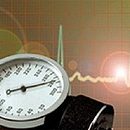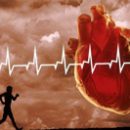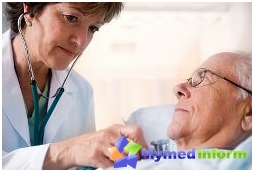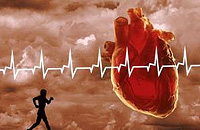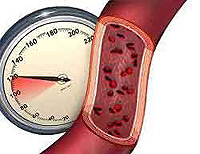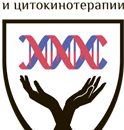Extrasystole is an extraordinary reduction in the heart and is felt by the patient as a strong heart pusher. The main method of diagnosing extrasystole is Holter monitoring.
Content
The concept of extrasystole
Extrasystoles are extraordinary to the normal rhythm of the heart reduction of the heart muscle. Usually, extrasystoles are felt by the patient as a strong heart push with a failure or a fading after it. When taking the pulse at this time there may be a pulse wave loss. Some extrasystoles may occur imperceptible to the patient.
Extrasystole occurs when an electrical pulse occurs outside the sinus node. Such a pulse extends to the heart muscle between normal pulses and causes an extraordinary reduction of the heart. The focus of the excitation in which an extraordinary impulse occurs, may appear anywhere in the conductive heart system.
The formation of such a hearth leads both diseases of the heart (cardiosclerosis, myocardial infarction, inflammatory diseases of the heart muscle, vices of the heart) and diseases of other organs. Extrasyistols may occur in diseases of the gastrointestinal tract, osteochondrosis of the spine, endocrine diseases, arterial hypertension. Often extraordinary reductions cause alcoholism, excessive use of coffee, overeating, smoking. The appearance of the extrasystole is one of the signs of overdose of cardiac glycosides. Diseases of the nervous system (neurocirculatory dystonia, vascular dystonia) can also contribute to the occurrence of these heart rhythm disorders. Extrasyistols may also appear in a healthy person with excessive physical and mental loads.
In the frequency of the emergence of extrasystole distinguish:
- Rare extrasystoles, less than 5 extrasystole per minute
- Extrasyistols of average frequency, from 6 to 15 per minute
- frequent extrasystoles, more than 15 per minute
Extrasyistols may be single or group. Group called Extrasyistols arising in a row without the next reduction in the heart between them. Two extrasystoles in a row are called bigeminia, three - triheminia and t.D. Such extrasystoles - a sign of more serious heart pathology. Frequent extrasystoles are easily fixed on the electrocardiogram.
Diagnosis of extrasystole
To diagnose more rare extrasystoles conduct Halter monitoring. When carrying out Halter monitoring, the electrocardiogram is recorded for one or several days. In this case, the patient leads a normal lifestyle. At the place of the emergence of extrasystoles there are supertrocks or atrial (emerging in atriums) and ventricular, the source of which is the conductive ventricular system or the interventricular partition. On the electrocardiogram, the atrial extrasystoles from the ventricular are easily distinguished by the type of curtains of cardiac complexes.
More dangerous extrasystoles arising in ventricles. They can transform into the life-threatening patient complication - ventricular fibrillation. Ventricular fibrillation occurs when the individual fibers of the heart muscle are reduced each in its rhythm, randomly. At the same time, the work of the heart is violated sharply, and severe blood circulation disorders arise. In some ventricular extrasystoles, a high risk of sudden death is considered, especially if the patient has severe heart disease.
Treatment of extrasystole
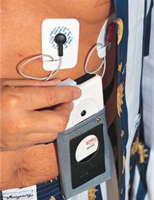 Rare extrasystoles, if after examining the patient, diseases of the heart are not detected, do not require treatment. If during the examination it turns out that the extrasystoles are associated with any other disease (diseases of the gastrointestinal tract, endocrine diseases, inflammatory diseases of the heart muscle), treatment is carried out by the main disease. It is recommended to avoid intoxications that cause extrasystoles - smoking, alcohol, excessive coffee use.
Rare extrasystoles, if after examining the patient, diseases of the heart are not detected, do not require treatment. If during the examination it turns out that the extrasystoles are associated with any other disease (diseases of the gastrointestinal tract, endocrine diseases, inflammatory diseases of the heart muscle), treatment is carried out by the main disease. It is recommended to avoid intoxications that cause extrasystoles - smoking, alcohol, excessive coffee use.
Extrasystole caused by disorders of the nervous system, psycho-emotional overloads is treated with the appointment of sedative fees (Zemernik, Melissa, Motherboard, Peony Tincture) or sedative preparations (Relanium, Rudotel).
If extrasystoles occur against the background of treatment with cardiac glycosides, heart glycosides are canceled. If, with daily halter monitoring, the number of extrasystole exceeds 200 and the patient has complaints or a heart disease is present, treatment is assigned.
Usually the treatment starts with the number of extrasystole from 700 per day. Purpose of drugs occurs with the obligatory consideration of species of the extrasystole and the frequency of heart rate. Selection of antiarrhythmic drugs are made individually and only by a doctor. After prescribing the drug, treatment is carried out using Halter monitoring. The best results are achieved during Halter monitoring once a month, but in practice it is little achievable. If the effect of the drug is good, extrasystoles disappear or significantly replenish and such an effect is preserved up to two months, the drug is possible. But at the same time, a long time is gradually reduced by a dose of medication, since the sharp cancellation of treatment leads to a re-emergence of extrasystole.
For the treatment of extrasystolia, quinidine, Novocainamide, Lidocaine, Mexylene, Curdaron, Diltiazene, Satolol and other drugs are used.

